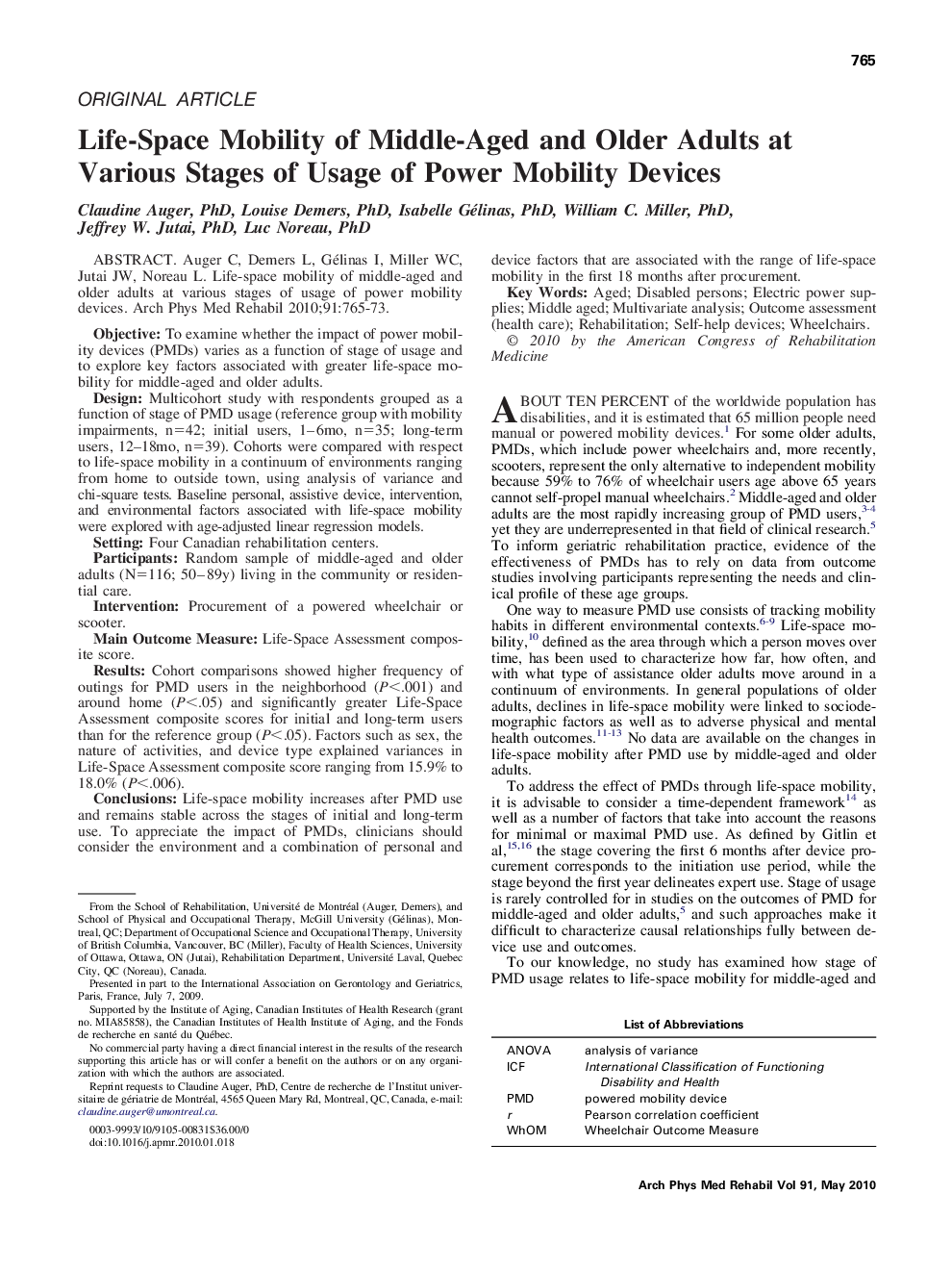| کد مقاله | کد نشریه | سال انتشار | مقاله انگلیسی | نسخه تمام متن |
|---|---|---|---|---|
| 3451255 | 1595753 | 2010 | 9 صفحه PDF | دانلود رایگان |

Auger C, Demers L, Gélinas I, Miller WC, Jutai JW, Noreau L. Life-space mobility of middle-aged and older adults at various stages of usage of power mobility devices.ObjectiveTo examine whether the impact of power mobility devices (PMDs) varies as a function of stage of usage and to explore key factors associated with greater life-space mobility for middle-aged and older adults.DesignMulticohort study with respondents grouped as a function of stage of PMD usage (reference group with mobility impairments, n=42; initial users, 1–6mo, n=35; long-term users, 12–18mo, n=39). Cohorts were compared with respect to life-space mobility in a continuum of environments ranging from home to outside town, using analysis of variance and chi-square tests. Baseline personal, assistive device, intervention, and environmental factors associated with life-space mobility were explored with age-adjusted linear regression models.SettingFour Canadian rehabilitation centers.ParticipantsRandom sample of middle-aged and older adults (N=116; 50–89y) living in the community or residential care.InterventionProcurement of a powered wheelchair or scooter.Main Outcome MeasureLife-Space Assessment composite score.ResultsCohort comparisons showed higher frequency of outings for PMD users in the neighborhood (P<.001) and around home (P<.05) and significantly greater Life-Space Assessment composite scores for initial and long-term users than for the reference group (P<.05). Factors such as sex, the nature of activities, and device type explained variances in Life-Space Assessment composite score ranging from 15.9% to 18.0% (P<.006).ConclusionsLife-space mobility increases after PMD use and remains stable across the stages of initial and long-term use. To appreciate the impact of PMDs, clinicians should consider the environment and a combination of personal and device factors that are associated with the range of life-space mobility in the first 18 months after procurement.
Journal: Archives of Physical Medicine and Rehabilitation - Volume 91, Issue 5, May 2010, Pages 765–773